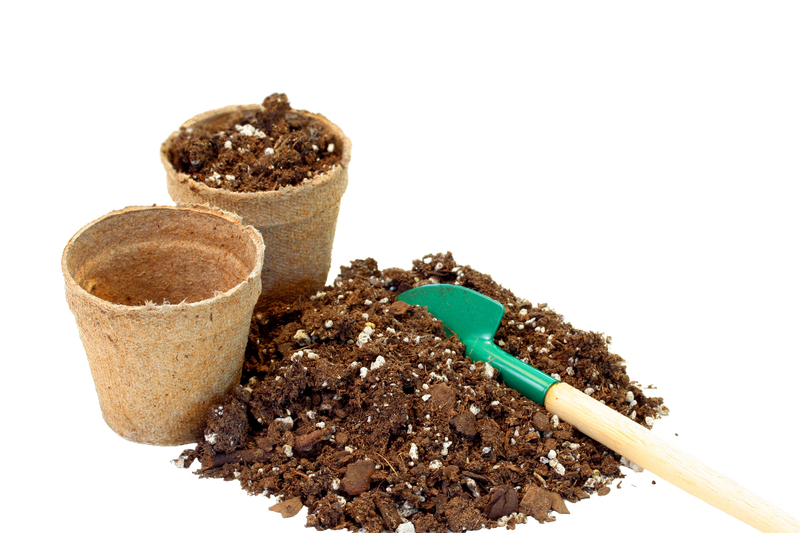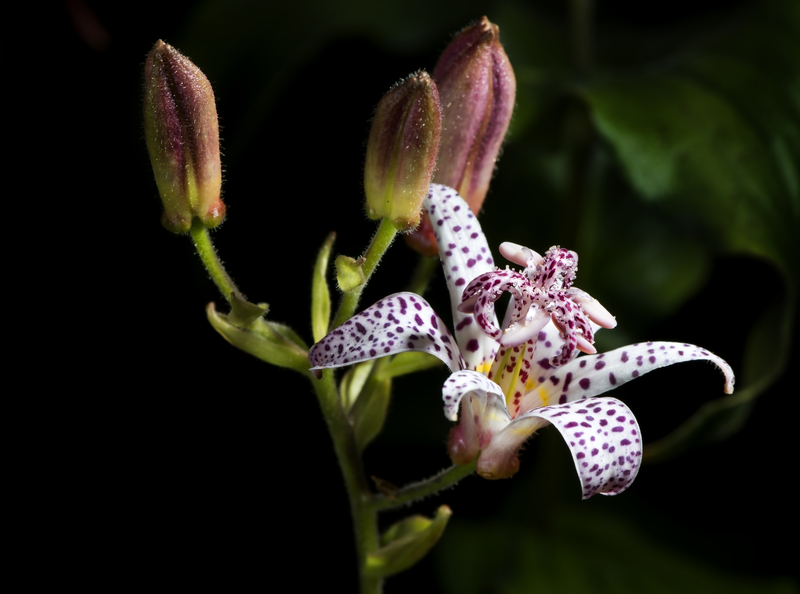Winter Garden Plant Protection Tips You'll Love
Posted on 14/09/2025
Winter Garden Plant Protection Tips You'll Love
As temperatures drop and days get shorter, your garden faces new challenges. Ensuring winter garden plant protection helps you maintain a healthy, beautiful outdoor space come springtime. In this comprehensive guide, we'll share expert-approved winter garden protection tips for plants you'll absolutely love. We'll cover practical strategies, essential supplies, and easy steps for protecting plants in winter, whether you're a novice or seasoned gardener.
Why Is Plant Protection Important in Winter?
Cold weather, winds, frost, snow, and fluctuating temperatures can weaken, or even kill, your favorite garden plants. In winter, plants are especially vulnerable due to:
- Freezing temperatures: Water in plant tissues can freeze, causing cell damage.
- Desiccating winds: Cold, dry winds strip moisture from leaves and soil.
- Frost heaving: Repeated freeze-thaw cycles can push plants out of the ground.
- Reduced daylight: Less sunlight means slower growth and weakened immunity.
- Heavy snow or ice: Can break branches and flatten fragile plants.
Effective winter garden plant care preserves your investment and ensures a vibrant, flourishing garden when warmer weather returns.

Top Winter Garden Plant Protection Tips
Ready to defend your landscape? Here are the best winter plant protection strategies you'll love using year after year:
1. Mulch Generously to Insulate Roots
Mulching is an easy, affordable way to protect garden plants in winter. A thick, even layer of mulch insulates roots, prevents frost heave, and moderates soil temperature.
- Use organic materials, such as shredded leaves, bark, wood chips, or straw.
- Apply 2-4 inches (5-10 cm) of mulch around perennials, shrubs, and newly planted trees.
- Keep mulch a few inches away from stems to avoid rot.
- For additional protection, use evergreen branches or pine boughs as a top layer.
Tip: Mulch in late fall when the ground begins to freeze to keep the soil temperature consistent.
2. Wrap & Cover Sensitive Plants
Delicate or marginally hardy plants--like roses, hydrangeas, and young trees--benefit from physical barriers against cold.
- Use burlap, frost cloth, or horticultural fleece to wrap shrubs and saplings.
- Create a frame with stakes, then drape covering materials to avoid direct contact with foliage.
- For extra protection, fill covers with straw or leaves for insulation.
Burlap wraps protect garden plants from harsh winds and ice accumulation without suffocating them. Remove covers periodically in mild spells to prevent mold.
3. Water Thoroughly Before the Deep Freeze
Many gardeners overlook watering in the cooler months. However, hydrated plants withstand cold stress better as moist soil conducts and stores heat more efficiently than dry soil.
- Water deeply before the ground freezes, especially for evergreens and trees.
- Avoid soaking plants right before an expected hard freeze; time it so moisture is absorbed prior to cold snaps.
Keep in mind: If your winter is dry, water on warmer days when the ground isn't frozen--root dehydration is a common cause of winter plant injury.
4. Prune Wisely Before Winter Sets In
Proper pruning helps plants enter winter healthy and ready to regrow in spring. However, incorrect timing can expose them to more stress.
- Remove dead, damaged, or diseased wood in late fall.
- Don't prune spring-flowering shrubs (like lilacs) until after blooming.
- Cut back perennials and grasses just above ground if they're susceptible to pests and disease; otherwise leave stems as natural insulation and wildlife habitat.
You'll love how tidy your winter garden looks--and your plants will thank you with healthy growth come spring!
5. Shield From Wildlife Damage
Hungry deer, rabbits, and rodents often target garden plants for food in winter.
- Wrap trunks of young trees with tree guards to prevent gnawing.
- Install wire mesh or fencing around prized shrubs and beds.
- Spray repellents or scatter deterrents--always following product instructions.
For eco-friendly garden protection, sprinkle blood meal or human hair, or plant deer-resistant species near vulnerable ones.
6. Create Protective Windbreaks
Winter winds can desiccate, damage and unroot plants. Erecting simple windbreaks is one of the best winter garden plant protection methods:
- Plant dense hedges or evergreen shrubs as living windbreaks.
- Use temporary barriers like stakes and burlap or snow fencing on the windward side of exposed beds.
- Group vulnerable potted plants together in a sheltered spot, close to a south-facing wall.
7. Take Care of Container Plants
Potted plants are especially vulnerable to freezing--soil in containers loses heat faster than in-ground beds.
- Move containers to sheltered areas, such as a garage, shed, or enclosed porch.
- Wrap pots with bubble wrap, blankets, or burlap for insulation.
- Raise pots off the ground on bricks or pot feet to prevent waterlogging and ice damage.
If storing tender bulbs indoors, clean and dry them before storing in peat moss or vermiculite.
8. Monitor for Overwintering Pests and Diseases
Some pests and diseases can persist through winter. Stay vigilant by:
- Cleaning up fallen leaves, branches, and plant debris.
- Sanitizing old pots and gardening tools before use.
- Inspecting plants for signs of eggs, larvae, or fungal infections.
Your proactive approach rewards you with a healthier spring garden.
Choosing and Using the Best Winter Plant Covers
The right cover gives your garden the winter protection it needs. Options include:
- Fleece or floating row covers: Allow light and moisture through while buffering cold.
- Burlap: Breathes well and protects from wind and ice; reusable and eco-friendly.
- Cloche or plant domes: Perfect for small edibles or ornamental plants; inexpensive and quick to deploy.
- Plastic sheeting: Good for temporary protection but does not allow air or moisture exchange. Remove on sunny days to avoid overheating.
***DIY tip:*** Cut up old sheets or use empty milk jugs to cover vulnerable seedlings and ornamental plants.
Extra Winter Garden Plant Care Essentials
Beyond insulation and covering, some winter plant care habits ensure robust, beautiful growth:
- Keep walkways clear: Minimize salt exposure to plants by shoveling, and use sand or cat litter for traction instead.
- Brush off snow: Use a broom to gently remove heavy snow from branches, but let ice melt naturally to avoid damage.
- Avoid fertilizers: Stop feeding plants by late summer--new growth won't harden off before frosts.
- Plan ahead: Choose native, well-adapted species to minimize winter injury in future gardens.
Common Questions About Winter Garden Plant Protection
How do you revive a frost-damaged plant?
If a plant suffers frostbite despite your garden protection efforts:
- Wait to prune until after the last frost or new growth appears.
- Remove dead or mushy stems, but leave healthy tissue undisturbed.
- Water carefully and don't fertilize until recovery is evident.
Can I leave garden bulbs in the ground all winter?
Most spring-flowering bulbs (e.g., tulips, daffodils) require winter chilling and can stay in the ground. Tender bulbs (like dahlias, cannas) need lifting and storage indoors after the first frost if you're in a cold zone.
Which plants need winter protection most?
Handsome but vulnerable plants needing extra winter plant care include:
- Newly-planted or young trees and shrubs
- Tender perennials or borderline hardy varieties
- Container plants and raised bed specimens
- Evergreens exposed to strong winter sun and wind
- Fruits, vegetables, or herbs with low cold-tolerance

Creating a Winter Garden Protection Checklist
Stay organized and keep your plants safe all season with this ultimate checklist:
- Mulch all garden beds and around trees.
- Water well before freezing temperatures set in.
- Protect sensitive plants with covers or windbreaks.
- Group pots in sheltered locations and wrap containers.
- Inspect for pests or disease and remove debris.
- Brush heavy snow off vulnerable shrubs regularly.
- Monitor weather forecasts and adjust as needed.
Conclusion: Keep Your Garden Thriving With Winter Plant Protection You'll Love
Winter can be tough, but your garden doesn't have to suffer. With a little preparation--and the winter plant protection tips above--you can look forward to thriving trees, shrubs, perennials, and even edibles when spring returns. By mulching, covering, watering, and planning ahead, you give your garden the best chance for survival and vigorous growth.
For more evergreen gardening advice, tips, and seasonal checklists, bookmark this article and check out our other resources. Protecting your winter garden plants is the key to a lush, beautiful yard year-round--and it's easier than you think!

